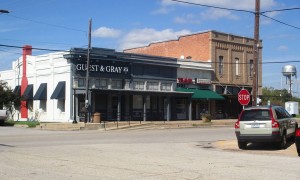One of the first questions asked by prospective buyers when visiting a new area is about property taxes. It ranks right up there with the average cost of homes, as the cost of living as a concern for families making a move.
Even the lowest property taxes in Texas, when viewed as a percentage of home value, are high. The state ranked third highest nationally for 2010, but because housing prices, on average, are lower than in many other areas, it may be that buying in Texas is still a bargain. Texas is also one of only seven states in the nation with no personal income tax; although, sales tax is charged on most purchases.
Generally, property taxes in the Greater Dallas-Fort Worth Metropolitan Area range between 2.2 and 2.8 percent of assessed value. In every case, the school district takes the largest chunk of change, with cities and counties splitting the balance in various ways to provide amenities and services for residents. County hospital districts and community colleges also benefit from property taxes.
Area Tax Rates Vary Widely
The exclusive Park Cities near Southern Methodist University in Dallas boast some of the lowest tax rates in the area and some of the most sought after homes in the Metroplex. The tax rate is low but considering how expensive these properties are, the tax bill can be substantial.
In 2012, Double Oak, located in the Lewisville Independent School District, boasted the lowest overall tax rate at 1.96 percent while other cities in the same school district ranged between 2.18 percent for Lewisville itself to 2.31 percent for the community of Highland Village. At the high end of the list are Lancaster, a southern Dallas County suburb with a population of just over 32,000 and a tax rate of 2.9 percent, and its neighbor to the west, River Oaks in southern Tarrant County, with a population of 7,500 and a tax rate of 2.95 percent. Housing prices in these two towns, however, are considered low, even for new construction.
The local taxing system is complicated due to multiple taxing authorities in several county areas. Cities, counties, and school districts do not necessarily share the same boundaries, and each offers different homestead, senior, military, and disabled exemptions. Varying rules and deadlines apply, and they are worth checking.
Ask Questions: Gain Answers
Central Appraisal Districts (for example, Dallas) are efficient, and office personnel are knowledgeable, helpful, and willing to answer telephone questions.
Overall, tax rates have remained remarkably stable since 2010. There have been only minor fluctuations, and rate reductions have occasionally occurred. However, in addition to the tax rate, numerous other factors influence a home buying decision. There are issues of convenience to employment, quality of schools, accessibility of recreational opportunities, and the existence of cultural and leisure activities. Additional considerations revolve around the overall look and feel, professional and volunteer interests, social, religious, and family preferences, and services offered by individual communities.
When seeking the lowest property taxes on a home in the Metroplex, don’t overlook the quality of the school district. Even if schools are not a concern, you will want to consider the county and municipal services offered in each community, such as parks, libraries, golf courses, swimming, other recreational facilities, or senior centers. Tax money also funds police and fire services, water supply, signage, trash pickup, recycling, and animal services, in addition to community celebrations and special observances.
Doing some field work before making a decision is as important as doing your homework before beginning the search. It’s good to be aware of all your options. Learn more about the Dallas-Fort Worth real estate market.
[cf]skyword_tracking_tag[/cf]






